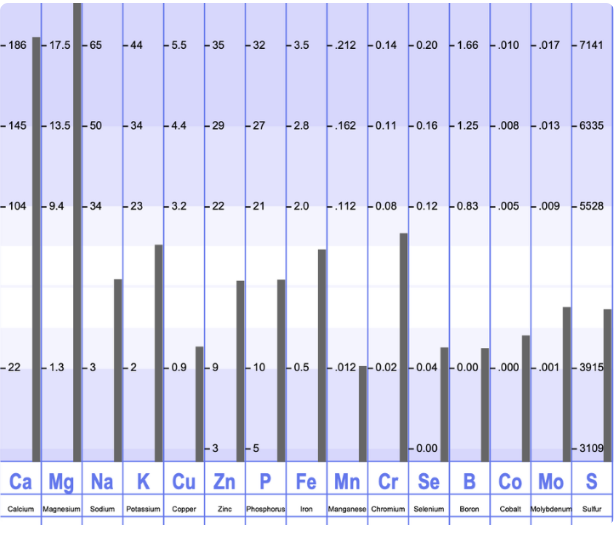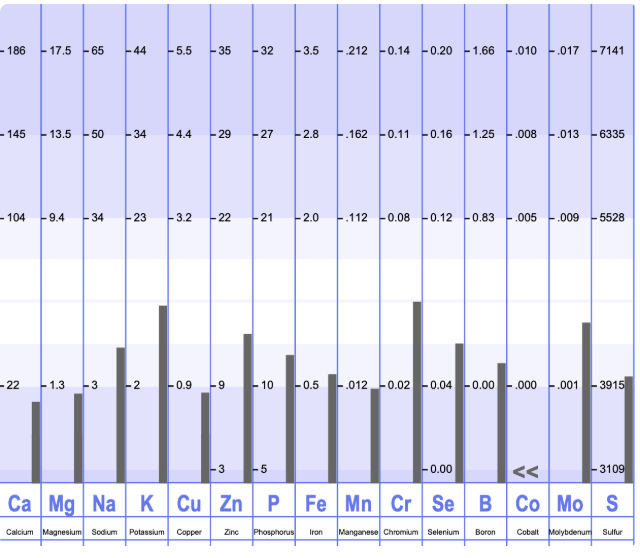I think this is one of the most helpful and important aspects of using hair mineral testing and something we can all benefit from. I break down some major areas below and cover more important ratios in this podcast episode!
Before we dive right into identifying stress on an HTMA, let’s first identify what stress is exactly.
“Stress within the body is a nonspecific response that allows the body to adapt to its environment to maintain homeostasis or balance.”
-Dr. Hans Seyle, Pioneer in Stress Research
Basically, stress is what allows our bodies to adapt to their environment. Not all stress is bad. In fact, it is beneficial for us to experience some stress. It’s when we are chronically stressed from all angles (mental, emotional, physical, nutritional, etc.) that it adds up and can lead to dysfunction in the body. There are a few different markers that we want to look at when assessing our stress response on an HTMA, but first, I think it’s helpful to take a quick look at your test.
When minerals are above the middle line, that is a loss, which means different things for different minerals, but the major takeaway is energy is being lost. The more minerals above the optimal line, the more stressed the body is.

When we see minerals that are below the optimal line and out of the white box range, minerals are low. This can be from a lack in our diet and/or from chronic stress. Typically when minerals are low, we are closer to the end stages of stress.

We are able to identify what stage of stress someone is in based on a few aspects of their HTMA.
This is the first stage and is known as the “fight or flight” response in the body. During this stage, the adrenal glands activate, release cortisol and adrenaline, and raise tissue sodium levels by releasing a hormone called aldosterone. Higher sodium than potassium on an HTMA is an indicator that you are in this stage.
This is the second stage of stress and is reflected in an HTMA with potassium that is also high and matching the high sodium/alarm response. This allows the fight or flight of the alarm stage to calm and return to normal. Adrenal gland activity decreases and starts to normalize, which allows healing to take place.
This is the third stage of stress and occurs when the stressor(s) is over a long period. The adrenals become more depleted from the chronic stress and sodium starts to get depleted as well. This will show up as a low ratio of sodium to potassium on an HTMA. It is when potassium is higher than sodium.
Outside of your metabolic type, looking at sodium and magnesium levels in general can be helpful for understanding your stress on an HTMA as well as looking at two key ratios.
Our sympathetic or fight or flight nervous system plays a major role in our regulation of sodium levels as well. When our bodies are experiencing a stressor and stimulate the SNS, this causes an increase in sodium retention. In fact, when sodium levels are low, our SNS will turn on in order to increase the body’s sodium levels. This shows that low levels of sodium are a stressor on the body. Overtime, low sodium levels weaken our adrenal glands and can lead to fatigue. Especially with how low sodium leads to less cell permeability AKA less nutrients getting inside our cells.
When we see low levels of sodium on an HTMA, that’s a sign that our body is not only stressed but that we’ve depleted important mineral resources like sodium. When sodium is high on an HTMA it’s a sign that the body is currently stressed and using that sodium.
When we experience a stressor, our brain is alerted and sends signals to our adrenal glands to release stress hormones. This activation of our sympathetic or fight or flight nervous system then leads to the excretion of magnesium.
Stress = increase in magnesium loss. This is why on a hair mineral test you can see very high magnesium and it signifies a loss. When magnesium levels are depleted, this is typically a sign you’ve been stressed for a while and are moving towards exhaustive/depleted stage of stress.
Hair tissue mineral analysis is a great way to assess your current stress response. The other important part of the picture is determining where your current stressors are coming from and what your stress has looked like in the past. In my Master Your Minerals course I walk students through their stress journey and encourage them to reflect on theirs. This is often when people make connections about previous stressors that are impacting their health today. I also have them do a day in the life exercise where they reflect on their current day to day. Are they constantly on the go, always attached to a screen, spend little time outside, etc. How we live every day greatly impacts our health. Testing is helpful and important but what you do with that information is what matters most!
reminder: i’m currently taking on 1:1 clients. if you’d like to explore what it would be like to work together and if we are a good fit, fill out this form to get more details!
